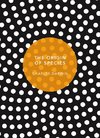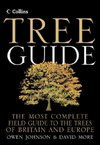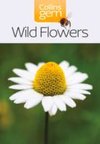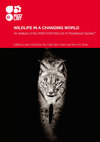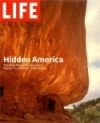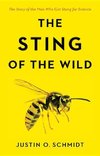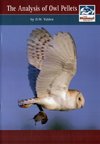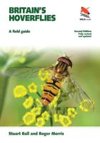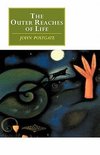
-
 Anglický jazyk
Anglický jazyk
ENDOLICHENIC FUNGI PRESENT & F
Autor: Yogesh Joshi
The term "endolichenic fungi" was introduced by Miadlikowska et al. (2004) for lineages of Ascomycota that reside within the lichen thallus and which are quite distinct from lichen mycobionts (the primary fungal component of the lichen thallus),... Viac o knihe
Na objednávku, dodanie 2-4 týždne
145.19 €
bežná cena: 164.99 €
O knihe
The term "endolichenic fungi" was introduced by Miadlikowska et al. (2004) for lineages of Ascomycota that reside within the lichen thallus and which are quite distinct from lichen mycobionts (the primary fungal component of the lichen thallus), lichenicolous fungi (which fruit or are otherwise symptomatic on lichen thalli), and incidental fungi occurring on thallus surfaces (Arnold et al. 2009; Lawrey and Diederich 2003; Lutzoni et al. 2001). They are an emerging group of endosymbiotic microorganisms and have been discovered within living, apparently healthy lichen thalli (Petrini et al. 1990; Girlanda et al. 1997; Suryanarayanan et al. 2005; W. Li et al. 2007; Arnold et al. 2009), and consist of fungal strains that reside within the lichen thallus in much the same way as endophytic fungi live within healthy plant tissues (Arnold et al. 2007).
These endolichenic fungi coexist with the mycobiont (which forms the bulk of the lichen thallus) of the lichens and live in very close association with the photobiont (the algal or cyanobacterial partner in the lichen symbiosis) (Arnold et al. 2009). They are more closely related to endophytes than to previously recognized lichen-associated fungi (i.e. lichen mycobionts and lichenicolous fungi; Lutzoni et al. 2001; Lawrey & Diederich 2003).
These fungi live a cryptic lifestyle inside the lichen thalli and require somewhat specialized methods for maximum recovery (Petrini et al. 1990; Girlanda et al. 1997). Preliminary studies suggest that they may be as species-rich as the endophytic fungi with which they co-occur in few sites studied to date (Arnold et al. 2009; U'Ren et al. 2010) and that they hold similar potential for pharmaceutical, agricultural and industrial uses (Paranagama et al. 2007; Ding et al. 2009). Despite increased interest in their diversity and applications, a lot remain unknown regarding the scale of endophytic and endolichenic biodiversity, and how communities are structured at the local level across assemblages of phylogenetically diverse hosts in natural ecosystems.
Importance, uses and economic importance
Ø As it is well known that the magnitude of estimated fungal diversity is increasing day by day and it has reached to 5.1 million from 1.5 million, but to our surprise only about 99,000 species have been reported till now. Hawksworth and Rossman (1997) reported that the remaining missing fungi could be discovered in following areas: a) fungi in tropical forests, b) fungi in unexplored habitats (hypogeous fungi of Australia, fungi living in the guts of beetles and insects, endophytes, lichenicolous fungi), c) lost or hidden species. Hence, by exploring novel endophytes from lichens i.e. the endolichenic fungi, we can to some extent resolve the fungal diversity debate.
Ø As endolichenic fungi provide a high taxon diversity, which can be completed in the relative comfort of a laboratory with minimal fieldwork, hence, novel endophytes could be isolated in laboratory with ease and without spending too much money.
Ø Relationship between lichen and endolichenic fungi is a very creative research subject in terms of ecological diversity and evolutionary adaptation.
Ø Endolichenic fungi are relatively unstudied and offer potential sources of novel natural products having their role in photoprotection, anti-oxidative activity, medicine, agriculture, pharmaceutical industry and can also be used as food additives, agrochemicals and cosmetics. This will open a new platform for the synthesis of novel secondary metabolites and their use in bioprospection.
Ø It has been found in higher plants that endophytes produce similar compounds as the host plant. Similarly, if the endolichenic fungi can produce the same compound as that produced by lichens, then we can save lichens (which are very slow growing and potential source of secondary metabolites) from being harvested. Hence, instead of harvesting the lichen diversity, the biologically active novel secondary metabolites can be harnessed from endolichenic fungi.
Ecological significance of endolichenic fungi
There is growing evidence with the research on endolichenic fungi that lichens have more complex niches than previously imagined. Endolichenic fungi represent an important ecological group of species that form associations with lichens. These fungi when occurring as endophyte doesn't cause any disease in lichens, but when occur freely in nature, then used to cause several diseases, for e.g. Alternaria alternata causes leaf spot, rots and blights and other diseases in plants; Aspergillus niger causes black mould in onions and ornamental plants and otomycosis (fungal ear infection); A. ochraceous is pathogenic to agricultural commodities, farmed animals and marine species (Andersson et al. 1993; Wilson et al. 2002; Cui et al. 2010; Ostry et al. 2013), and consumption of this fungus by humans and animals produces chronic neurotoxic, immunosuppressive, genotoxic, carcinogenic and teratogenic effects (Ravelo et al. 2011), asthma and lung diseases in humans (Reponen et al. 2012), and not only contaminates food and initiates apoptosis of plant cells (Wang et al. 2013) but also produces Ochratoxin A (a type of mycotoxin); F. oxysporum is a saprophyte and degrades lignin (Sutherland et al. 1983; Rodrigues et al. 1996) and complex carbohydrates (Snyder & Hansen 1940; Christakopoulos et al. 1995, 1996) and a pervasive plant endophyte that can colonize plant roots (Katan 1971; Gordon et al. 1989) and may even protect plants or be the basis of disease suppression (Larkin et al. 1993, Lemanceau et al. 1993); F. solani causes sudden death syndrome in Soybean (Bennett et al. 2014); Nigrospora oryzae is a saprotroph and can be found colonizing debris of different plant species and a week parasite producing grain spots of rice, sorghum and corn (Neergaard 1977); Penicillium citrinum causes mortality in mosquito Culex quinquefasciatus (Da Costa & De Oliveira 1998; Maketon et al. 2014); Sordaria fimicola is commonly found on the fecal matter of herbivores; Trichoderma viride is a biofungicide and used for seed treatment for suppression of various diseases caused by fungal pathogens. It has been shown to provide protection against pathogens such as Rhizoctonia, Pythium and even Armillaria; Xylaria hypoxylon is a saprotrophic fungus. Hence, the literature of endolichenic fungi demonstrates a very different interaction of these above mentioned fungi with lichens. These fungi were isolated from asymptomatic lichen thalli, where they grew as a symptomless endophytes, and by endophytes, we mean a fungus growing in living plant tissues which does not cause obvious symptoms or morphological modifications in terms of its impact on the host. Interestingly, in case of endophytes of grasses the accumulation of mycotoxins was often limited and it is now an established fact that endophytism reduces mycotoxin accumulation.
So why these fungi are behaving in such a symptomless manner in such a startlingly complex niche i.e. lichen, can only be answered after detailed research in the field of endolichenic fungi.The field of lichenology in India started somewhat seven decades back and as the time passes drastic changes were noticed in this field. Initially scientists and academicians focused their study on taxonomy of lichens, but later they realized the importance of this organism and several studies pertaining to environment, ecology, climate change came into existence. This all has led to the publication of several books on LICHENS. Similarly, there are several publications and some books on endophytes isolated from different plants. But, the field of endolichenic fungi is very alluring and there are only handful publications available on this topic from India, but worldwide people are working on their secondary metabolites (chemical diversity and bio-prospection) very rapidly, especially in China. We faced many problems in gathering the literature when we started working on these fungi. Till date not a single book was available on endolichenic fungi that can to some extent provide information about the fungal diversity and chemical structures of secondary metabolites and their bioactive potentials. So this book will be in high demand throughout the globe among the lichenologists and mycologists because this is going to be the single piece of literature which comprises every little detail of endolichenic fungi distributed worldwide.
The book will provide information about the magnitude of endolichenic fungi (including their diversity, worldwide distribution, ecology, seasonal variations, relationship with their host lichen and the plant on which the lichen was growing) and their secondary metabolites (including chemical diversity and their biological significance) which are natural, untapped and inexhaustible alternatives to the presently available drugs in markets for both crops as well as humans.
Scattered information regarding various protocols for isolating endophytes from different plant groups is available and this book will provide various protocols for isolating endophytic fungi from different groups of plants. Since isolation of endophytes is a method dependent process, hence this chapter could be of immense use to researchers.
This book also contains a special chapter on historical background and all the facts and latest research done on endolichenic fungi. This chapter will solve all the perplexity about this group of fungi and will help to clear the concept of Endolichenic fungi.
All the researchers working in the field of lichenology and mycology; masters, M. Phil., Ph.D. degree students worldwide can use and read this book. The book will also be useful to the researchers working in the field of pharmacology and computational drug designing.
- Vydavateľstvo: Springer Nature Singapore
- Rok vydania: 2019
- Formát: Hardback
- Rozmer: 241 x 160 mm
- Jazyk: Anglický jazyk
- ISBN: 9789811372674

